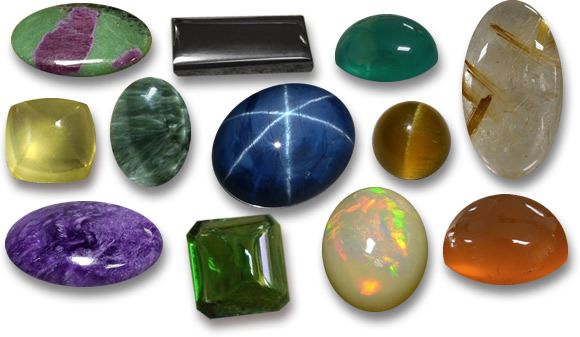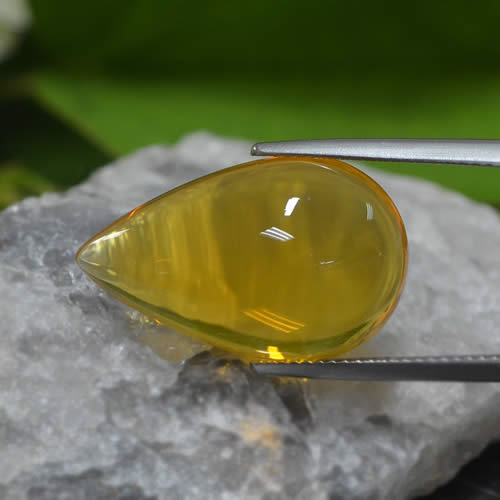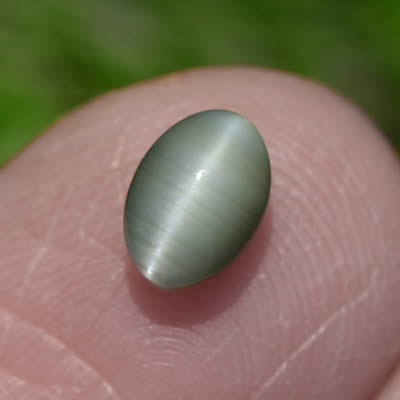Your Details
Your Details
|
Reviewed By Andreas Zabczyk
Why are Some Gems Cut as Cabochons?Gemstones cut en cabochon, with their smooth, rounded surfaces and domed tops, have captivated jewelry enthusiasts for centuries. Unlike faceted stones that emphasize brilliance and sparkle, cabochons are designed to showcase the unique colors, patterns, and inherent qualities of the gem. Browse through our assortment of cabochon cut stones for sale. A cabochon, derived from the French term "en cabochon," refers to a specific gemstone cut where the stone is shaped and polished into a smooth, typically convex form with a flat base. Cabochon cut stone, often referred to as "cabs," may be cut in any shape, though oval is by far the most common. Certain stones are almost always cut en cabochon, including opal, turquoise, onyx, moonstone, and star sapphire. In the gemstone world you will often hear the term cabochon shortened to "cab".  Technically, cabochons are not really "cut". Rather, they are shaped and then polished. It is thus a much simpler task to produce a cabochon than it is to cut a faceted gem with many faces. Before the art of faceting was developed, all gemstones were produced as cabochons, though some were intricately carved as well. Faceted gemstones first emerged in European jewelry towards the end of the 13th and beginning of the 14th centuries. The introduction of the horizontally turning cutting-wheel in the late 1400s enabled the creation and replication of intricate geometric faceting patterns, allowing for better control and enhancement of the internal light of the stone. The Renaissance era's fascination with geometry and light reflection spurred the advancement of a refined lapidary art. Beginning with the gem-cutting industry in Bruges during the Renaissance, and spreading to Venice, Florence, and eventually across Europe, the manipulation of light became the focal point in gem cutting.  Once the technology and skill was available to facet gemstones, why were cabochons still produced? The question is an interesting one because different gems are cut as cabs for different reasons. In many cases it is because the gem has special properties that are displayed only when it is cabochon cut. Examples are gems that display optical phenomena such as asterism (the star effect), chatoyancy (the cat's eye effect), iridescence (e.g., opal) or adularescence (e.g., moonstone).  Most gems that are opaque are cut en cabochon rather than faceted. Also, lower grade material of gemstone types such as sapphire, ruby and garnet is cut as cabs. If the gem material has very good color but is not sufficiently transparent or clean to be faceted, it can still be shaped and polished into very attractive cabochons. It is also common to cut softer stones as cabs, since gems with a hardness score of less than 7 (on the Mohs scale) can easily be scratched by the quartz in dust and grit. Minute scratches show much less on a cabochon than on a faceted stone. |
